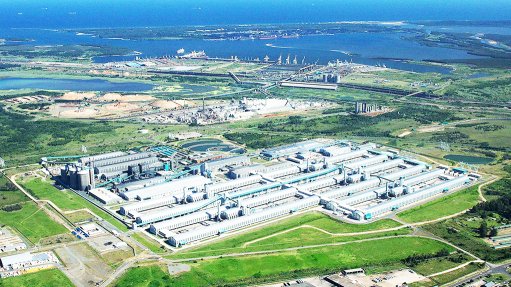Data centres - at the core of today’s healthcare
This article has been supplied.
By: Canninah Dladla - Cluster President for English-speaking Africa at Schneider Electric
Benjamin Franklin famously said: "An investment in knowledge always pays the best interest”. This could not be more applicable when it comes to the collection and utilisation of data. And at the heart of this knowledge and resultant information lies the data centre.
Today, most organisations depend on data centres in some capacity, with critical services like healthcare relying on them even more heavily. For example, many hospitals operate with vital electronic health records (EHR) running in the background—information that resides on and is backed up by data centres.
However, designing data centres for healthcare environments requires more than just technical capability. Hospitals operate under stringent legislation to protect patient information, and they must also ensure uninterrupted access to life-saving systems.
In South Africa, this challenge is compounded by an often-unpredictable power supply. Hospitals must be designed to operate independently, and off-the-grid, especially when delivering emergency and critical care. This requires infrastructure that is resilient, scalable, and designed with continuity in mind.
Design considerations
Globally, data centres are classified in tiers, with Tier-4 centres offering near-perfect availability and full redundancy. But in healthcare, where human lives are at stake, downtime is simply not an option. While some hospital systems may resemble Tier-3 or Tier-4 configurations, critical systems demand even higher levels of availability, therefore, running 24/7 with immediate responsiveness.
As part of this infrastructure, hospitals must incorporate backup energy solutions such as generators, uninterruptible power supply (UPS) systems, and increasingly, renewable energy. Schneider Electric’s Galaxy VXL UPS, for example, is designed to support mission-critical environments like healthcare by offering high efficiency, modular scalability, and energy flexibility.
Its compact design and compatibility with advanced battery technologies allow hospitals to adapt power needs in real-time, supporting emergency operations without disruption and reducing reliance on traditional capital-heavy investments.
Smart infrastructure for smarter hospitals
Hospital data centres must also integrate smart building management systems (BMS) to maintain temperature control, air quality, and humidity, all of which are crucial for patient comfort and safety.
When paired with a data centre and robust power solutions, BMS’ help hospitals enhance operational efficiency, ensuring the seamless operation of IT infrastructure, life-saving equipment, and emergency response capabilities.
Importantly, data centre design in healthcare is never one-size-fits-all. Storage volumes, cloud configurations, and operational needs vary widely. Design teams must work closely with hospital stakeholders while meeting industry standards and regulatory requirements.
Selecting the right equipment is a balance between innovation and safety. Advanced battery technologies offer many benefits, but must be stored and managed with care.
Ultimately, hospitals carry the added weight of human lives. The design of critical systems like data centres must be meticulously planned and executed, with resilience, safety, and adaptability at the core.
Article Enquiry
Email Article
Save Article
Feedback
To advertise email advertising@creamermedia.co.za or click here
Announcements
What's On
Subscribe to improve your user experience...
Option 1 (equivalent of R125 a month):
Receive a weekly copy of Creamer Media's Engineering News & Mining Weekly magazine
(print copy for those in South Africa and e-magazine for those outside of South Africa)
Receive daily email newsletters
Access to full search results
Access archive of magazine back copies
Access to Projects in Progress
Access to ONE Research Report of your choice in PDF format
Option 2 (equivalent of R375 a month):
All benefits from Option 1
PLUS
Access to Creamer Media's Research Channel Africa for ALL Research Reports, in PDF format, on various industrial and mining sectors
including Electricity; Water; Energy Transition; Hydrogen; Roads, Rail and Ports; Coal; Gold; Platinum; Battery Metals; etc.
Already a subscriber?
Forgotten your password?
Receive weekly copy of Creamer Media's Engineering News & Mining Weekly magazine (print copy for those in South Africa and e-magazine for those outside of South Africa)
➕
Recieve daily email newsletters
➕
Access to full search results
➕
Access archive of magazine back copies
➕
Access to Projects in Progress
➕
Access to ONE Research Report of your choice in PDF format
RESEARCH CHANNEL AFRICA
R4500 (equivalent of R375 a month)
SUBSCRIBEAll benefits from Option 1
➕
Access to Creamer Media's Research Channel Africa for ALL Research Reports on various industrial and mining sectors, in PDF format, including on:
Electricity
➕
Water
➕
Energy Transition
➕
Hydrogen
➕
Roads, Rail and Ports
➕
Coal
➕
Gold
➕
Platinum
➕
Battery Metals
➕
etc.
Receive all benefits from Option 1 or Option 2 delivered to numerous people at your company
➕
Multiple User names and Passwords for simultaneous log-ins
➕
Intranet integration access to all in your organisation

















